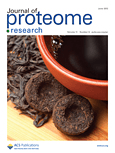
JOURNAL OF PROTEOME RESEARCH
Scope & Guideline
Pioneering Discoveries in Proteome Science
Introduction
Aims and Scopes
- Proteomic Methodologies:
The journal emphasizes novel and advanced proteomic techniques, including mass spectrometry, top-down and bottom-up proteomics, and quantitative approaches such as TMT and iTRAQ. - Functional Proteomics:
Research articles often explore the functional implications of proteomic changes in various diseases, providing insights into mechanisms of action and potential therapeutic targets. - Disease Biomarkers:
A significant focus is placed on the identification and validation of protein biomarkers for various diseases, including cancer, neurodegenerative disorders, and metabolic diseases. - Integration with Other Omics:
The journal encourages integrative approaches that combine proteomics with genomics, metabolomics, and transcriptomics to provide a more holistic understanding of biological systems. - Innovative Analytical Techniques:
There is a consistent emphasis on developing and optimizing analytical techniques, such as liquid chromatography, mass spectrometry, and bioinformatics tools to enhance data interpretation and analysis. - Clinical Applications:
Research often highlights the clinical relevance of proteomic studies, including their applications in diagnostics, treatment monitoring, and understanding disease mechanisms.
Trending and Emerging
- Machine Learning in Proteomics:
There is a growing incorporation of machine learning techniques to enhance data analysis, peptide identification, and biomarker discovery, indicating a trend towards computational proteomics. - Proteogenomics:
Research integrating proteomics with genomic data is on the rise, aiding in the identification of novel protein isoforms and understanding the relationship between genetic variations and protein expression. - Metabolomics and Lipidomics Integration:
Studies combining proteomics with metabolomics and lipidomics are trending, reflecting a holistic approach to understanding metabolic pathways and their implications in health and disease. - COVID-19 Related Proteomics:
Given the ongoing global health crisis, there has been a notable increase in research focused on the proteomic aspects of SARS-CoV-2 and its effects on human health, showcasing the journal's responsiveness to emerging health challenges. - Biomarker Discovery for Chronic Diseases:
The journal is increasingly publishing studies aimed at discovering and validating biomarkers for chronic diseases, emphasizing the clinical applications of proteomics.
Declining or Waning
- Basic Proteomic Studies:
The focus on fundamental proteomic studies without direct clinical or functional implications has decreased, with more emphasis now on applied research and clinical relevance. - Single-Cell Proteomics:
Despite initial interest, single-cell proteomics has appeared less frequently in recent issues, possibly due to the complexities and challenges associated with this approach. - Traditional Protein Purification Techniques:
The publication of studies centered around traditional protein purification and characterization methods has waned, with a shift towards more advanced and high-throughput methodologies. - Generalized Protein Interaction Studies:
Research centered on broad, generalized protein interactions without specific biological or clinical context seems to have decreased, as the journal emphasizes more targeted and mechanistic insights.
Similar Journals
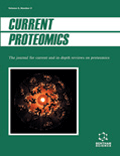
Current Proteomics
Navigating the Evolving Landscape of ProteomicsCurrent Proteomics is a distinguished journal dedicated to the dynamic field of proteomics, offering researchers and professionals a platform to disseminate innovative findings and comprehensive reviews. Published by Bentham Science Publishers Ltd, this journal caters to a global audience and serves as an essential resource for students, academics, and industry experts interested in advances in biochemistry and molecular biology. With an ISSN of 1570-1646 and an E-ISSN of 1875-6247, the journal has established itself in various research categories, achieving a Q4 ranking in both Biochemistry and Molecular Biology as of 2023. While the impact factor and H-index data are not specified, its Scopus ranking reflects a competitive position in its fields, with percentiles in the 12th to 16th range. Although not an open-access journal, Current Proteomics is vital for fostering ongoing dialogue and collaboration in proteomic research, encouraging contributions that explore cutting-edge methodologies and applications. Researchers are invited to share their insights and contribute to this evolving discipline, thus enhancing the collective understanding of proteomics within the scientific community.

All Life
Bridging Disciplines for a Deeper Understanding of LifeAll Life is a distinguished academic journal published by TAYLOR & FRANCIS LTD, based in the United Kingdom, focusing on the interdisciplinary realms of agricultural and biological sciences, biochemistry, genetics, and neuroscience. With the ISSN 2689-5293 and E-ISSN 2689-5307, this open-access journal aims to disseminate high-quality research from 2020 to 2024, facilitating a wider reach and impact across various fields. Notably, it holds a Q3 ranking in both Agricultural and Biological Sciences, as well as Biochemistry, Genetics and Molecular Biology, and a Q4 ranking in Neuroscience, reflecting its growing presence in these disciplines. All Life aims to foster collaboration among researchers, professionals, and students, encouraging innovative approaches in understanding life sciences. By delivering timely insights and thought-provoking discussions, the journal plays a crucial role in advancing knowledge and promoting interdisciplinary dialogue in the evolving landscape of life sciences research.

BIOCHIMICA ET BIOPHYSICA ACTA-MOLECULAR BASIS OF DISEASE
Charting the Course of Disease MechanismsBIOCHIMICA ET BIOPHYSICA ACTA-MOLECULAR BASIS OF DISEASE, published by Elsevier, is a pivotal journal in the fields of Molecular Biology and Molecular Medicine, recognized for its high impact factor and robust ranking within Scopus categories, holding prestigious quartiles in Q1 for both disciplines as of 2023. With ISSN 0925-4439 and E-ISSN 1879-260X, this journal fosters cutting-edge research from 1990 to 2025, addressing the critical molecular mechanisms underlying human diseases. Its wide-ranging scope includes original research articles, reviews, and advanced theoretical insights, serving as an essential resource for researchers, clinicians, and students alike. The journal is based in the Netherlands, at RADARWEG 29, 1043 NX AMSTERDAM, and while it does not currently offer an open-access option, it continues to maintain a strong presence in the scientific community, enhancing our understanding of molecular processes in health and disease.
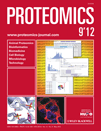
PROTEOMICS
Exploring innovative methodologies in proteomics.PROTEOMICS is a leading journal focused on the rapidly evolving field of proteomics, published by WILEY in Germany. With a solid reputation established since its inception in 2001, it has continually contributed to the understanding of protein functions and interactions within biological systems. As part of its commitment to academic excellence, PROTEOMICS is ranked in the second quartile for both Biochemistry and Molecular Biology categories (2023), reflecting its significant influence in advancing research in these areas. Although it does not currently provide open access options, it remains a vital resource for researchers, professionals, and students keen to explore innovative methodologies and findings in proteomic research. By publishing groundbreaking studies that bridge theoretical knowledge with practical applications, PROTEOMICS plays a crucial role in enhancing our understanding of molecular processes and driving forward advancements in the life sciences.
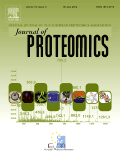
Journal of Proteomics
Transforming research with cutting-edge proteomic insights.Journal of Proteomics, published by Elsevier, is an esteemed peer-reviewed journal dedicated to advancing research in the field of proteomics, with broad implications for biochemistry and biophysics. Established in 2008, the journal has continuously evolved, embracing innovative methodologies and technologies that facilitate protein analysis from a variety of biological systems. With its current standing in the Q2 category for both biochemistry and biophysics as of 2023, it is recognized as a significant contributor to scientific literature. The journal publishes original research articles, reviews, and methodological advancements, providing invaluable insights for researchers, professionals, and students alike. Although it does not offer open access, the journal remains a crucial platform for disseminating knowledge that informs various applications, ranging from drug development to disease understanding. As it converges towards 2024, the Journal of Proteomics continues to solidify its role in shaping the future of proteomic research through rigorous scientific inquiry and innovation.

MOLECULAR & CELLULAR PROTEOMICS
Innovating the future of molecular and cellular studies.MOLECULAR & CELLULAR PROTEOMICS, published by Elsevier, stands as a premier journal in the fields of Biochemistry, Analytical Chemistry, and Molecular Biology, with a distinguished Q1 ranking reflecting its high impact and contribution to the scientific community. Established in 2002, this journal has consistently provided a platform for the latest research in protein science, merging molecular biology with advanced analytical techniques. With impressive Scopus rankings—41st in Biochemistry and 16th in Analytical Chemistry—it caters to an audience of researchers, professionals, and students eager to explore cutting-edge developments in proteomics. Although currently not designated as open access, the journal aims to foster knowledge dissemination through accessible research content. As it continues to evolve until 2024, MOLECULAR & CELLULAR PROTEOMICS is essential for anyone passionately engaged in the ever-expanding field of proteomics.

Molecular Omics
Connecting Fundamental Science with Real-World ApplicationsMolecular Omics is a premier, peer-reviewed journal published by the Royal Society of Chemistry, focusing on the interdisciplinary field of molecular biology with significant implications for biochemistry and genetics. With an E-ISSN of 2515-4184, this journal has been dedicated to disseminating high-quality research since its inception in 2018, maintaining an impressive trajectory in academic contributions until 2024. Currently, it holds a Q2 quartile ranking in both Biochemistry and Genetics, alongside a Q3 ranking in Molecular Biology for 2023, highlighting its relevance and influence in these domains. The journal is accessible as an open access publication, promoting the widespread dissemination of groundbreaking research. As part of a vibrant academic community, Molecular Omics aims to bridge fundamental and applied science, appealing to researchers, professionals, and students eager to expand their knowledge on molecular mechanisms and technologies that shape the future of biological research.
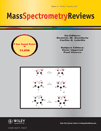
MASS SPECTROMETRY REVIEWS
Unveiling the Science Behind SpectrometryMASS SPECTROMETRY REVIEWS, published by Wiley, is a premier academic journal dedicated to advancing the field of mass spectrometry and its applications across a multitude of scientific disciplines. With an ISSN of 0277-7037 and an E-ISSN of 1098-2787, the journal has established itself as a vital resource within the realms of Analytical Chemistry, Biochemistry, Genetics, Condensed Matter Physics, and Spectroscopy, achieving Q1 status across these categories in 2023. As a testament to its significant contribution to scholarly research, it boasts impressive Scopus rankings, including a rank of #2 out of 76 in Chemistry - Spectroscopy and #4 out of 156 in Chemistry - Analytical Chemistry, placing it in the 97th percentile and above. Emphasizing high-quality, peer-reviewed research, MASS SPECTROMETRY REVIEWS serves as an essential platform for researchers, professionals, and students aiming to stay abreast of cutting-edge developments and methodologies in mass spectrometry. The journal is committed to fostering a deeper understanding of mass spectrometric techniques while also contributing to interdisciplinary advancements, making it a valuable addition to any academic library. Authors seeking to disseminate their work in a journal with a strong reputation and impact in the scientific community will find MASS SPECTROMETRY REVIEWS an ideal venue.

Expert Review of Proteomics
Navigating the Landscape of Proteomics with Expertise.Expert Review of Proteomics, published by TAYLOR & FRANCIS LTD, is a distinguished journal that focuses on the latest advancements in the field of proteomics, a critical area within biochemistry and molecular biology. With an ISSN of 1478-9450 and E-ISSN 1744-8387, this journal has been pivotal in disseminating high-quality research from its inception in 2004 to its planned convergence in 2024. Its influential position is reflected in its 2023 rankings, placing it in the Q2 category for both Biochemistry and Molecular Biology, alongside respectable Scopus rankings that rank it 118th and 141st in its respective categories. Despite its non-open access structure, Expert Review of Proteomics provides researchers and professionals with a vital platform for critical reviews and insights into proteomic methodologies, thus contributing significantly to the global scientific community. By bridging theoretical research with practical applications, it serves as an essential resource for those dedicated to advancing their knowledge and expertise in this dynamic field.

Genome Medicine
Transforming Research into Real-World SolutionsGenome Medicine is a prestigious, peer-reviewed journal published by BMC, focusing on the rapidly evolving fields of genetics, molecular biology, and molecular medicine. Established in 2009 and boasting an open-access format, it has become a leading platform for disseminating high-quality research findings that advance our understanding of genetic diseases and therapeutic innovations. With an impressive Q1 ranking across multiple relevant categories—in particular, genetics (clinical), molecular biology, and molecular medicine—this journal is recognized for its substantial impact in the academic community, as evidenced by its exceptional placement in Scopus rankings. By providing unrestricted access to groundbreaking studies, Genome Medicine fosters collaboration and knowledge sharing among researchers, clinicians, and educators, thus playing a vital role in the transition from fundamental genetic research to clinical applications. Researchers are encouraged to contribute their findings and insights, further solidifying the journal’s position as a pivotal resource for those dedicated to advancing genomic medicine.